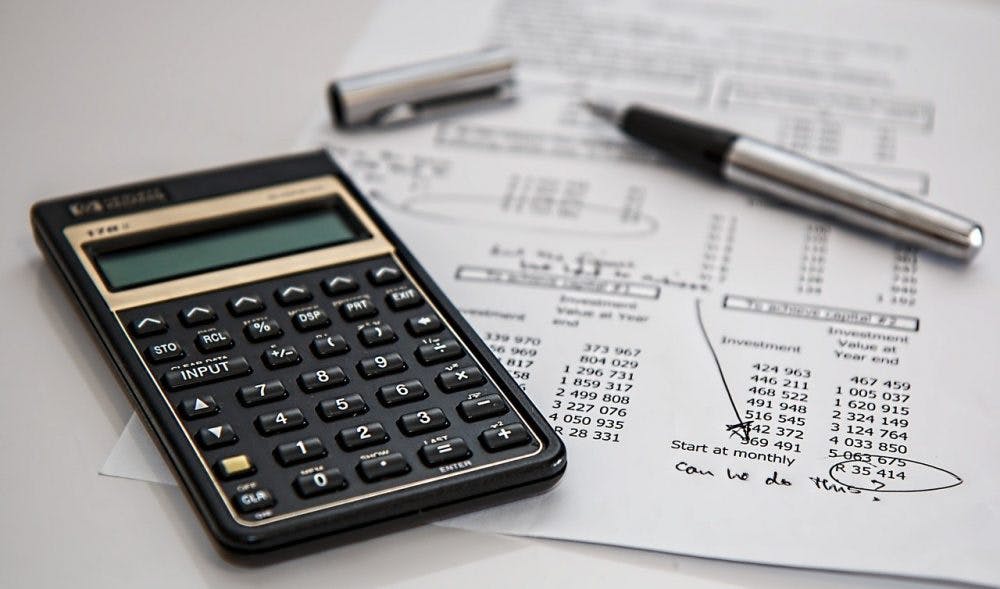Commercial
How to calculate capital growth for your property investment?
Published
22 February, 2021

Calculating capital growth on a property is a must when assessing your investment options. Commercial real estate investment is a hit for investors wanting a passive income, but it’s equally as prosperous for those wanting a return on their initial investment.
Known for its strong yields of 7 per cent to 10 per cent (and even higher), many investors forget that commercial real estate provides huge capital growth opportunities.
What is capital growth?
Also known as capital appreciation or return on investment, capital growth is the increase in your investment over time. Capital growth is achieved by your property increasing in value. And this increase may come about in two or more ways:
- The market: When property demand increases or supply decreases, your property becomes somewhat of a commodity. This demand pushes up the price of the commercial asset, causing your initial investment to increase too. Some of the market factors that drive capital growth are economic growth, population growth, a drop in unemployment, and even interest rates.
- Adding value: This is where you or the investment manager will get their hands dirty to create capital growth in the property. The property may need a facelift, equipment upgrades, or additional signage. Even an upgrade in the tenancy profile could achieve capital growth. For example, Bunnings will be able to afford a much higher price per square metre than the local hardware store.
How to calculate capital growth?
To calculate your investment’s capital growth, you’ll need three pieces of data:
I = Initial investment ($)
C = Capital growth rate (%)
P = Investment period (yrs)
And you’ll use the following equation to calculate the capital growth of your property investment:
Capital Growth = I x (1 + C)^P
Save yourself the notepad space. Use our free tool to calculate your capital growth.
Capital Growth Calculator
Initial investment ($)
Your initial investment is the amount you’re investing in the property or investment opportunity. For a commercial property investment, this is usually a six- or seven-figure sum.
Most unlisted property trusts will require a minimum investment, sometimes around $250,000 (or less in particular circumstances). (Keep in mind your initial investment is after all fees are taken into account. You may pay a fund manager a fee for their service, but this amount obviously won’t be invested or returned to you. Don’t include it in your calculations. Instead deduct this amount from the future value of your investment.)
Capital growth rate (%)
The capital growth rate is typically an annual percentage. Check the investment brochure or Investment Memorandum (IM) to find out what the investment manager forecasts the future capital growth to be.
At Properties & Pathways, we’ve seen annual capital growth of between 15 per cent and even 30 per cent for our investments. Take a look at our investment archives to see for yourself.
(Remember: Investments can and do fluctuate. Past performance is not necessarily indicative of future performance.)
Investment term (yrs)
Sometimes investors will choose their own investment term or will be told what the investment period is likely to be by the investment manager. For commercial property investment, it’s likely the investment period will be three to five years, and sometimes even longer.
Commercial property investment is for investors who like to play the long game. It’s also for investors who can put their trust in the investment manager. This is why many invest with an unlisted property trust in the first place—it’s a set and forget investment, managed by professionals who can foreshadow what the real estate market will do over the next five to 10 years.
Other considerations for capital growth
 So far we’ve shown you a very simple way to calculate your capital growth. But really, we haven’t scratched the surface. You’ll have plenty more to factor in when you consider the return you’re likely to achieve from your investment:
So far we’ve shown you a very simple way to calculate your capital growth. But really, we haven’t scratched the surface. You’ll have plenty more to factor in when you consider the return you’re likely to achieve from your investment:
Yield
If you’ve already calculated your investment’s capital growth and you’re wearing a smile, then good news… You haven’t even factored in your annual yield.
Yield is typically known as the annual cash return you’ll receive from the money you’ve invested. Its passive income, or cash flow, and can be anywhere from 7 per cent to 10 per cent (or higher) for a commercial property investment. Residential yields hover around the 2 per cent to 3 per cent mark, which is why many investors look to commercial real estate to provide robust yields.
To discover your total investor return, add your expected annual yield over the lifetime of the investment to your investment’s capital growth.
Capital Expenses (Capex)
Property is not a small investment. And that’s not just because of the hefty price tag of these assets, but because of the expenses typically involved. Make sure you consider the likely expenses for acquiring, managing, and divesting your property investment:
- Land tax
- Council rates
- Body corporate fees
- Utilities
- Professional fees (i.e. legal, accounting fees)
- Insurance
- Maintenance
- Landscaping
- Physical upgrades
Smart commercial property investors will put aside investment capital in the form of a reserve fund. A reserve fund is a pool of capital used for unexpected events like repairs, maintenance, and even vacancy periods should the commercial tenant suddenly vacate the property.
Before investing in a commercial property, ensure you understand these likely expenses upfront. If you’re not careful, your expected capital growth will be much less impressive without factoring in these outgoings.
Capital Gains Tax (CGT)
Capital Gains Tax (CGT) is triggered when a property is sold or you exit your investment and are paid your total return. One of our most popular blog posts is what capital gains tax means for commercial property investment because CGT is a notorious tax obligation that can erode investor return if not properly understood.
Sadly, some investors don’t know how to minimise their capital gains tax and end up with less return in their pocket than they otherwise should. For more information on how capital gains tax might impact your investment, talk to your account or financial planner.
Want an investment you can trust?
Consider investing alongside an experienced property investment company with a reinvestment rate of 91%. Get in touch to learn more about investing alongside us at Properties & Pathways.



